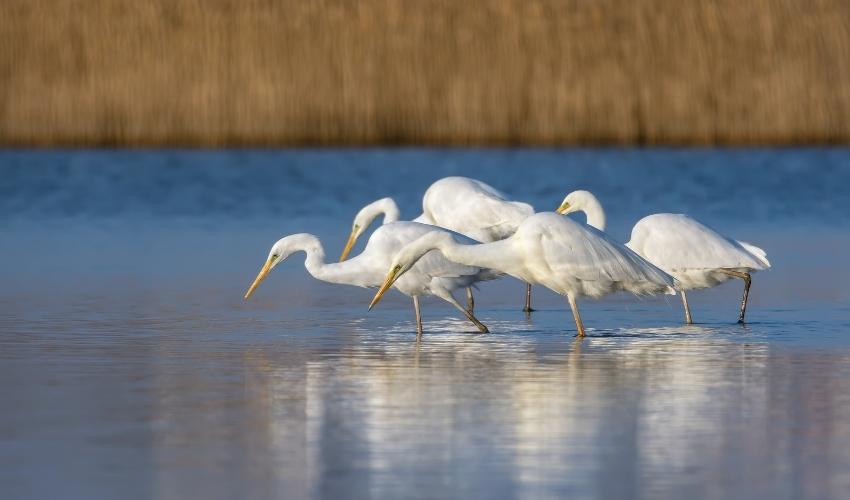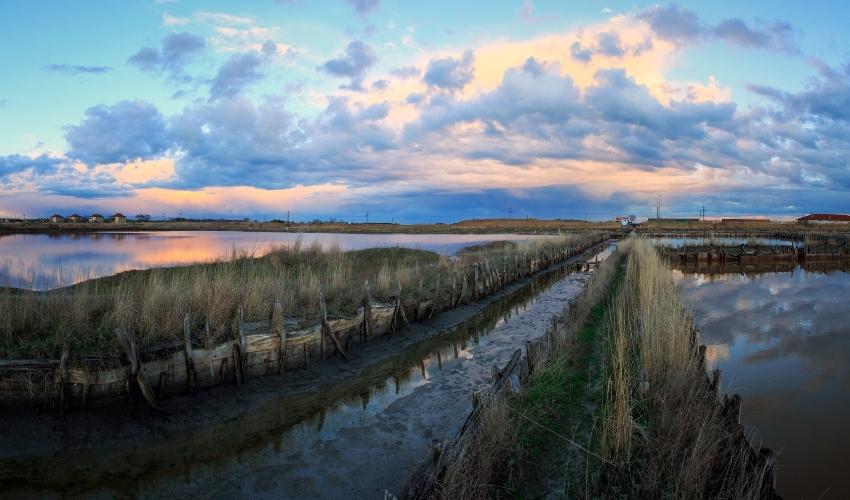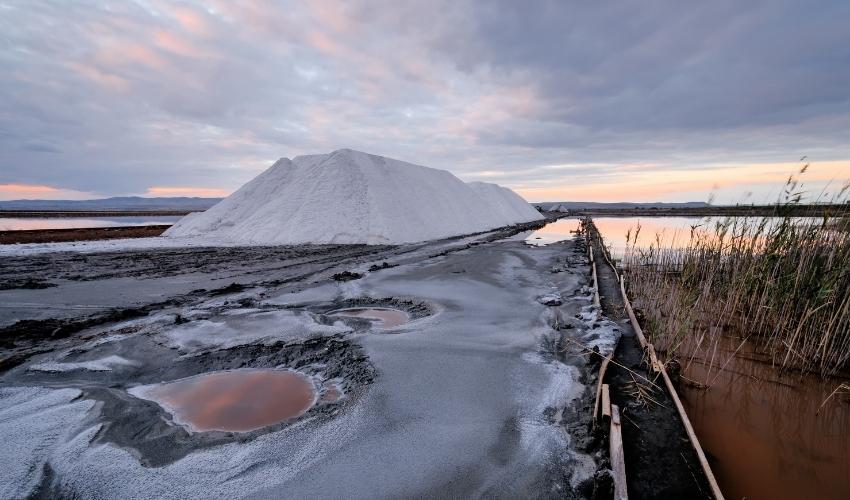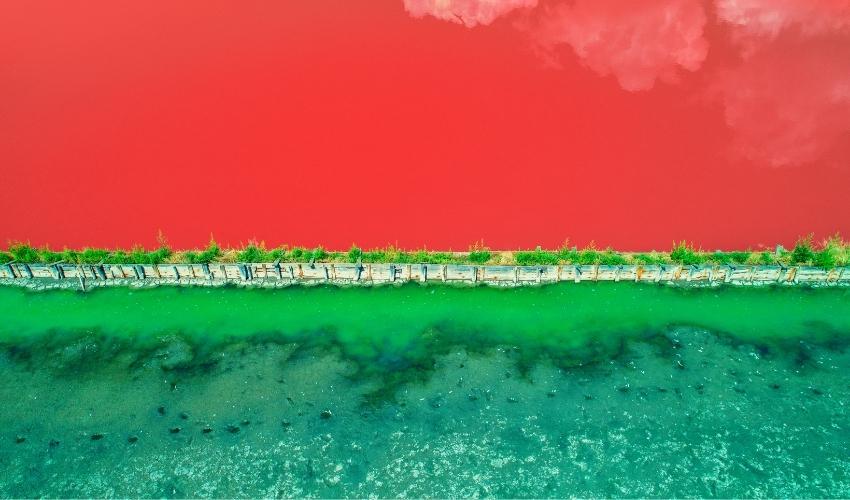The northeastern corner of Burgas is the awe-inspiring, otherworldly bird paradise of Bulgaria, Lake Atanasovsko.
Trundling along the coast, you will be bewildered by the hypersaline coastal lake, nearly 9 km long, located 1.5 m below sea level, visited by more than 316 bird species, including pink flamingos.
Of these, 14 are globally endangered, and 170 species are of European conservation importance.
Here, bird lovers will find the only place where the maned tern, the little black-headed gull and the thick-billed tern breed are.
Since it does not freeze in winter, Atanasovsko Lake is a place of international importance for wintering waterfowl like the white heron, osprey, mallard, and curled pelican.


The lake is located on the Via Pontica migration route and is of European importance for the migration of soaring birds, especially pelicans, eagles, grebes and storks.
The lake is one of the most significant places in Europe, with a narrow front of migration. Every spring and autumn, along the invisible celestial highway Via Pontica, millions of birds fly thousands of kilometres from their wintering grounds to their breeding grounds and back.
In 1980 the northern half of the lake was declared a reserve. In 1984, Lake Atanasovsko was classified as a Wetland of International Importance according to the Ramsar Convention.
BirdLife International recognized the site as a key ornithological territory (KOT) in 1989. The same year the lake was declared a CORINE site for its importance in the conservation of rare and endangered bird species. As of 2008, Atanasovsko Lake is part of the European Natura 2000 network.
While protecting a diversity of habitats, Lake Atanasovsko is Bulgaria's biggest salt source, with an annual production of 40,000 tons.


In 1906, the natural coastline habitats were converted into salt pans, but on this land, salt production can be traced back to the 3rd century BC.
Nowadays, salt is produced in a traditional, environmentally-friendly way to preserve biodiversity in the region.
Why is the lake pink?

While most pink lakes get their colour from algae, rich minerals, high saline levels mixed with high temperatures and little rain, Atanasovsko Lake owes its soft pink waters to microscopic brine shrimp who live in the ultra-salty water.
Some parts of the lake are open-air spas, allowing you to take your experience to another level by floating in the salty pink waters for as long as you want.
You will quickly learn that the unique qualities of the lake go far beyond its pink waters. The lake has medicinal and wellness properties thanks to vital minerals like sulphur, calcium, sodium, magnesium, silicon, boron, potassium, bromine and strontium found in the mud.
On a sunny day, join the locals who coat head to toe with the light, silky mud charged with minerals and nutrients as you add some extra relaxation to your spa day before plunging into the sea.
Sounds like a great place to take pictures. When’s the best time for photographers?

Once you had enough mud bathing, head to the northern part of Lake Atanasovsko, known as the Point, located in a wildlife sanctuary dating back to 1980.
Photographers and wildlife lovers from everywhere are attracted by the spectacular setting, with the deep pink lake a stark contrast to the clear blue sky and the white salt dunes.
The lake is in its glory in the summertime when you can enjoy the brightly coloured waters in red, white, green and pink, a real feast for the eyes.

In summer and autumn, you can see storks, pink pelicans and spotted eagles. In winter, you might spot wintering mallards, Dalmatian pelicans or Eurasian widgeon.
Why are there so many flamingos?

The first flamingos that made Lake Atanasovsko their home for the winter came 15 years ago. Their number grew gradually over time when, in August 2019, the first large flock of 160 flamingos arrived in Burgas.
In 2021, ornithologists counted 1,200 flamingoes in the area, and their numbers are increasing. Flamingos are not typical for Bulgaria’s latitudes, so what attracts them here?
Most of the flamingoes in Lake Atanasovsko are youngsters looking for new territories far from the older birds. The pink flocks fly out from nearby colonies in neighbouring Greece and Turkey. But some come from as far as Spain, France and even more distant lands.
With the effects of climate change, flamingoes are looking for new territories where they find shallow lagoons, similar to Lake Atanasovsko.
There are four walking and cycling routes, which promise to fill up your camera with pink flamingos. Especially in the winter, there are days when the light is very suitable for observation and photography.
When should I visit?
The best time to visit Burgas is during summer, which features blue skies, sunshine and very little rain (think late May to September). However, there are more flamingos during the autumn and winter seasons (October through April).
Ready to explore the most incredible natural wonder in Burgas while having your dental treatment in Bulgaria? Get your free starter treatment plan here, and enjoy a journey to remember with Dentaround.



